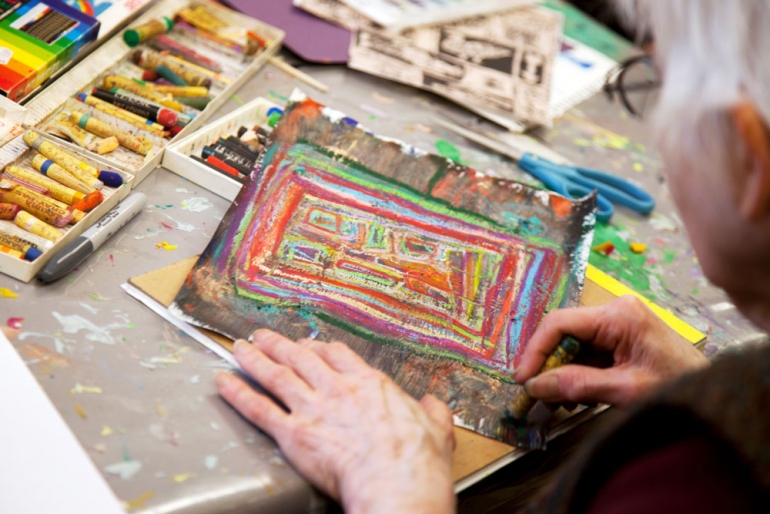The Art of Healing

Kathleen Masterson and Suzanne Leigh look at Art for Recovery, a pioneering program at the University of California San Francisco:
“Now we’re starting to ask why, and to bring in the science to study art’s impact. National funding agencies are starting to support this, and we’re going to see a lot of research emerge in upcoming years.”
Over the last few decades, a growing body of studies and anecdotal evidence suggesting that art is healing have driven the incorporation of art into medical settings. Nearly half of the health care institutions in the United States reported including arts in health care programming, ranging from art and music therapy to featuring visual art in hospitals.
“It’s a huge opportunity to think about using different modes of healing,” said Julene Johnson, PhD, a cognitive neuroscientist and professor at the UCSF Institute for Health & Aging. She’s running a study measuring the health impacts of singing in a choir. “The nice thing about the arts is our long, long history of using music and arts for healing across thousands of years, and the fact that it’s relatively low cost to implement.”
